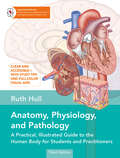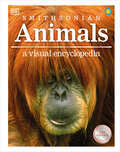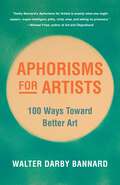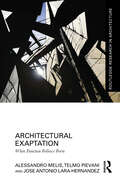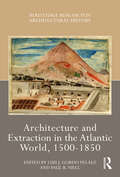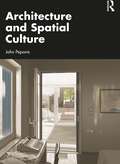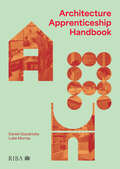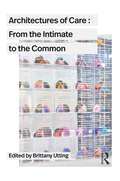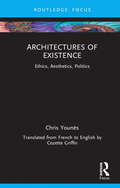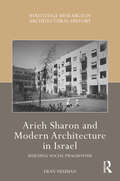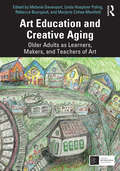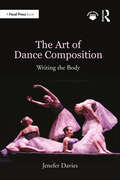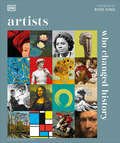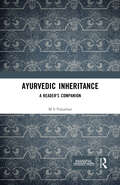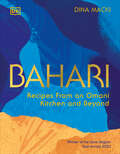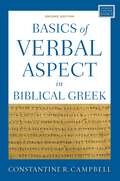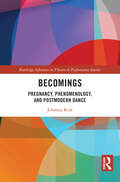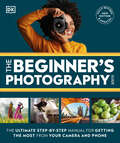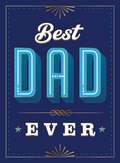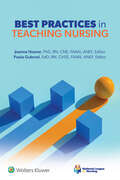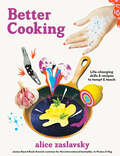- Table View
- List View
Anatomy, Physiology, and Pathology, Third Edition: A Practical, Illustrated Guide to the Human Body for Students and Practitioners--Clear and accessible, with study tips and full-color visual aids
by Ruth HullA full-color, easy-to-understand introduction to anatomy, physiology, and pathology that's designed to provide a comprehensive understanding of the human body without overwhelming readers.Anatomy, Physiology, and Pathology is the ideal introduction on the topic for students of complementary and physical therapies. Designed for ease of learning both as an independent study resource and in the classroom, this textbook is suitable for anyone requiring detailed knowledge of these subjects and has been adopted by colleges worldwide.Author and therapist Ruth Hull provides a thorough understanding of anatomy, physiology, and pathology with clear, accessible language and helpful learning tools. It&’s designed for easy comprehension, with more than 300 clearly labeled color images; flow charts, diagrams, and tables to help visualize complex ideas; study tips; practice questions in each chapter; and more.Chapters outline the following systems:Skin, hair, and nailsSkeletal, muscular, and nervous systemsEndocrine and respiratory systemsCardiovascular, lymphatic, and immune systemsDigestive systemUrinary systemReproductive systemThis book also serves as an effective refresher for current healthcare and bodywork professionals.
Ancient Worlds (DK Panorama)
by DKAncient Worlds is a tour through history's most influential civilizations between 3000 BCE and 600 CE, capturing in vivid detail moments that convey the cultural, technological, and organizational characteristics central to their success.From Sumer, the world's earliest civilization, to the heyday of the Mayan Empire, the tour crosses every continent, taking in developments in urban planning, art and architecture, religion, warfare, trade, and cultural exchange. Discover how deep knowledge of the Sun, sea, and stars enabled ancient seafarers to navigate the Pacific Ocean; witness the highs and lows of a thrilling chariot race in the Roman Empire's greatest hippodrome; and marvel at the military might of the Mauryan Empire and its 9,000 war elephants. Full of fascinating detail, each scene is a window on the lives of the most powerful and innovative peoples in times past. Ideal for children and parents to pore over together and explore similarities and differences with cultures around the world today.
Animals A Visual Encyclopedia
by DKSee the animal kingdom up close and personal in this ultimate reference book for children.Filled with more than 700 photographs, habitat maps, and illustrations, Animals A Children's Encyclopedia helps children and parents learn about the rich variety of animal life on our planet.Meet the deadliest, largest, friendliest, fastest and downright strangest animals known to man, and discover what they look like, where they live, what they do, what they eat and what life is like for their young. From the latest research to recent numbers on populations, this book gives you all the information you need about animals on land, in water, and in the air.This animal encyclopedia for children offers:- An introduction to the animal kingdom through photographs of hundreds of animals accompanied by informative text.- A new and updated edition of a popular title in the Children&’s Encyclopedia series, which has sold millions of copies worldwide.- A global scope of information, covering all key habitats and continents from around the world.At a time in history when climate change and habitat loss are profoundly affecting animals, this book helps educate children about all the creatures in the world that are at risk of vanishing forever.From the same series as the New Children's Encyclopedia and DK children's encyclopedias of Science, Art, and Geography (among others), this updated animal encyclopedia is full of valuable reference information for children, parents, and educators. Learn all about the world one subject at a time!If you like Animals A Children&’s Encyclopedia then why not complete the collection? Part of popular New Children&’s Encyclopedia series, avid readers can enjoy Legends and Sacred Stories, Art, Myths, and Ocean A Children&’s Encyclopedia.
Aphorisms for Artists: 100 Ways Toward Better Art
by Walter Darby BannardA Volume of Timeless Wisdom for Artists to Consult Like an Oracle Why do young artists struggle to find their voices? Walter Darby Bannard, a renowned teacher, critic, and internationally exhibited painter, contemplated that question for more than two decades. At the urging of one of his former students, Bannard set down his thoughts in a short book, Aphorisms for Artists: 100 Ways Toward Better Art. It is at once a volume of practical art-making wisdom and an engaging piece of personal philosophy, both wry and readable. Open to any page, and you'll find a memorable gem of wisdom, followed by a brief expansion by Bannard that adds more insight. It is a necessary reference to keep on hand in the studio, and a perfect gift for the aspiring artist to read and re-read, and to consult at times of artistic troubles.
Architectural Exaptation: When Function Follows Form (Routledge Research in Architecture)
by Alessandro Melis Telmo Pievani Jose Antonio Lara-HernandezArchitectural Exaptation: When Function Follows Form focuses on the significance and the originality of the study of exaptation. It presents exaptation as an opportunity to extend architectural design towards more sustainable approaches aimed at enforcing urban resilience.The use of exaptation’s definition in architecture supports the heuristic value of cross-disciplinary studies on biology and architecture, which seem even more relevant in times of global environmental crises. This book aims to make a critique of the pre-existing and extensive paternalistic literature. Exaptation will be described as a functional shift of a structure that already had a prior, but different, function. In architecture, a functional shift of a structure that already had a function may apply to forms of decorative elements embedded in architectural components, and to both change of function of tectonic elements and the change of use of an architectural space. The book is illustrated with examples from around the globe, including China, Italy, Mexico, New Zealand, the USA and the UK, and looks at different civilizations and diverse historical periods, ranging from the urban to the architectural scale. Such examples highlight the potential and latent human creative capacity to change the use and functions, something that cities and buildings could consider when facing disturbances. Exaptation is shown as an alternative narrative to the simplifications of evolutionary puritanism. It also offers an innovative perspective and presents an opportunity to re-think the manner in which we design and redesign our cities.This book will be of interest to architecture, planning, urban design and biology researchers and students.
Architecture and Extraction in the Atlantic World, 1500-1850 (Routledge Research in Architectural History)
by Luis Gordo Peláez Paul NiellThis edited collection examines the development of Atlantic World architecture after 1492. In particular, the chapters explore the landscapes of extraction as material networks that brought people, space, and labor together in harvesting raw materials, cultivating agriculture for export-level profits, and circulating raw materials and commodities in Europe, Africa, and the Americas from 1500 to 1850. This book argues that histories of extraction remain incomplete without careful attention to the social, physical, and mental nexus that is architecture, just as architecture’s development in the last 500 years cannot be adequately comprehended without attention to empire, extraction, colonialism, and the rise of what Immanuel Wallerstein has called the world system. This world system was possible because of built environments that enabled resource extraction, transport of raw materials, circulation of commodities, and enactment of power relations in the struggle between capital and labor. Separated into three sections: Harvesting the Environment, Cultivating Profit, and Circulating Commodities: Networks and Infrastructures, this volume covers a wide range of geographies, from England to South America, from Africa to South Carolina. The book aims to decenter Eurocentric approaches to architectural history to expose the global circulation of ideas, things, commodities, and people that constituted the architecture of extraction in the Atlantic World. In focusing on extraction, we aim to recover histories of labor exploitation and racialized oppression of interest to the global community. The book will be of interest to researchers and students of architectural history, geography, urban and labor history, literary studies, historic preservation, and colonial studies.
Architecture and Spatial Culture
by John PeponisBuilt space supports our daily habits and our membership of communities, organizations, institutions, or social formations. Architecture and Spatial Culture argues that architecture matters because it makes the settings of our life intelligible, so that we can sustain or creatively transform them.As technological and social innovations allow us to overcome spatial constraints to communication, cooperation, and exchange, so the architecture of embodied experience reflects independent cultural choices and human values. The analysis of a wealth of examples, from urban environments to workplaces and museums, shows that built space functions pedagogically, inducing us to specific ways of seeing, understanding, and feeling, and supporting distinct patterns of cooperation and life in common.Architecture and Spatial Culture is about the principles that underpin the design and inhabitation of space. It also serves as an introduction to Space Syntax, a descriptive theory used to model the human functions of layouts. Thus, it addresses architects, students of architecture and all those working in disciplines that engage the design of the built environment and its social effects.
Architecture Apprenticeship Handbook
by Daniel Goodricke Luke MurrayArchitecture apprenticeships are a new route into the profession. Having gained traction since their inception in 2018, it is an attractive route for young generations of architects to obtain their professional qualifications and earn while they learn. Aimed at prospective and current Level 7: Architect Apprentices, this guide provides the knowledge to achieve the most from your apprenticeship education, empowering your exposure in the profession within academic and professional areas. Taking you on a journey through the apprenticeship, it presents key stages of the course through precedents and will let you know what to expect from this educational route, and when to expect it. Using case studies from recent graduates and current apprentices who have excelled through this route, it features information from employers and academics involved in architecture apprenticeship courses in the UK to provide tips, advice and guidance. Designed to be interactive, you will be able to populate and annotate the book at various stages to map the key stages of your journey and reflect on your professional development.
Architectures of Care: From the Intimate to the Common
by Brittany UttingDrawing from a diverse range of interdisciplinary voices, this book explores how spaces of care shape our affective, material, and social forms, from the most intimate scale of the body to our planetary commons. Typical definitions of care center around the maintenance of a livable life, encompassing everything from shelter and welfare to health and safety. Architecture plays a fundamental role in these definitions, inscribed in institutional archetypes such as the home, the hospital, the school, and the nursery. However, these spaces often structure modes of care that prescribe gender roles, bodily norms, and labor practices. How can architecture instead engage with an expanded definition of care that questions such roles and norms, producing more hybrid entanglements between our bodies, our collective lives, and our environments? Chapters in this book explore issues ranging from disabled domesticities and nursing, unbuilding whiteness in the built environment, practices and pedagogies of environmental care, and the solidarity networks within ‘The Cloud’. Case studies include Floating University Berlin, commoning initiatives by the Black Panther party, and hospitals for the United Mine Workers of America, among many other sites and scales of care. Exploring architecture through the lenses of gender studies, labor theory, environmental justice, and the medical humanities, this book will engage students and academics from a wide range of disciplines.
Architectures of Care: From the Intimate to the Common
by Brittany UttingDrawing from a diverse range of interdisciplinary voices, this book explores how spaces of care shape our affective, material, and social forms, from the most intimate scale of the body to our planetary commons.Typical definitions of care center around the maintenance of a livable life, encompassing everything from shelter and welfare to health and safety. Architecture plays a fundamental role in these definitions, inscribed in institutional archetypes such as the home, the hospital, the school, and the nursery. However, these spaces often structure modes of care that prescribe gender roles, bodily norms, and labor practices. How can architecture instead engage with an expanded definition of care that questions such roles and norms, producing more hybrid entanglements between our bodies, our collective lives, and our environments? Chapters in this book explore issues ranging from disabled domesticities and nursing, unbuilding whiteness in the built environment, practices and pedagogies of environmental care, and the solidarity networks within ‘The Cloud’. Case studies include Floating University Berlin, commoning initiatives by the Black Panther party, and hospitals for the United Mine Workers of America, among many other sites and scales of care.Exploring architecture through the lenses of gender studies, labor theory, environmental justice, and the medical humanities, this book will engage students and academics from a wide range of disciplines.
Architectures of Existence: Ethics, Aesthetics, Politics
by Chris YounèsArchitectures of Existence proposes that philosophical thinking (ecosophical thinking) can inform the way we engage with our world and its inhabitants, as architects, designers and planners, but also as individuals, as people, and as a society. In Art et existence, Maldiney states: "For us, to inhabit is to exist". This book aims to unfold, extend, articulate and thicken this postulate by interweaving architecture, city, landscape, literature and philosophy. It takes up the synergistic lines of long-term research carried out from an ecosophical perspective. Such an attitude explores an art of existing in multiplicity, singularity and openness, manifesting the critical dimension through a reinterpretation of the knotting of the trajectories of time, humanity and its becoming. Insisting on what is between things and beings as well as on what is happening, regenerating, recycling, reviving, saving, diversifying, sparing, recreating, meditating: and so caring. These are all eco-rhythms of a different type between human and non-human, to consider ourselves in the world. In an era of uncertainty and climate threats, this book develops the margins of possibility offered by the subject of architecture. This book will be of interest to researchers and students of architecture, urban planning and philosophy.
Arieh Sharon and Modern Architecture in Israel: Building Social Pragmatism (Routledge Research in Architectural History)
by Eran NeumanArieh Sharon and Modern Architecture in Israel: Building Social Pragmatism offers the first comprehensive survey of the work of Arieh Sharon and analyzes and discusses his designs and plans in relation to the emergence of the State of Israel. A graduate of the Bauhaus, Sharon worked for a few years at the office of Hannes Mayer before returning to Mandatory Palestine. There, he established his office which was occupied in its first years in planning kibbutzim and residential buildings in Tel Aviv. After the establishment of the State of Israel in 1948, Arieh Sharon became the director and chief architect of the National Planning Department, where he was asked to devise the young country’s first national masterplan. Known as the Sharon Plan, it was instrumental in shaping the development of the new nation. During the 1950s and 1960s, Sharon designed many of Israel’s institutions, including hospitals and buildings on university campuses. This book presents Sharon’s exceptionally wide range of work and examines his perception of architecture in both socialist and pragmatist terms. It also explores Sharon’s modernist approach to architecture and his subsequent shift to Brutalist architecture, when he partnered with Benjamin Idelson in the 1950s and when his son, Eldar Sharon, joined the office in 1964. Thus, the book contributes a missing chapter in the historiography of Israeli architecture in particular and of modern architecture overall. This book will be of interest to researchers in architecture, modern architecture, Israel studies, Middle Eastern studies and migration of knowledge.
Art Education and Creative Aging: Older Adults as Learners, Makers, and Teachers of Art
by Melanie Davenport Linda Hoeptner Poling Rébecca Bourgault Marjorie Cohee ManifoldThis text explores how art education can meaningfully address the needs of older adults as learners, makers, and teachers of art in formal and informal settings. It combines perspectives of museum educators, teacher preparation professors, art therapists, teaching artists, and older artists on what is meant by Creative Aging and the ways art education can support the health and well-being of this population. Most importantly, the book discusses what the field of art education can gain from older adult learners and creators.Chapters are organized into five sections: Creatively Aging, Meeting Older Adults’ Unique Needs, Intergenerational Art Education, Engaging Older Adults With Artworks and Objects, and In Our Own Voices: Older Adults as Learners, Makers, and Teachers. Within each section, contributors investigate themes critical to art education within aging populations such as memory loss, disability, coping with life transitions, lifelong learning, intergenerational relationships, and personal narrative. The final section focuses on accounts from older adult artists/educators, offering insights and proposing new directions for growing older creatively.Though ideal for art education faculty and students in graduate and undergraduate settings, as well as art education scholars and those teaching in multigenerational programs within community settings, this book is an expansive resource for any artist, student, or scholar interested in the links among health, well-being, and arts participation for older adults.
The Art of Dance Composition: Writing the Body
by Jenefer DaviesThe Art of Dance Composition: Writing the Body is an introduction to modern dance composition, providing clear and structured approaches to designing and defining movement that demystify the creative process. The book introduces the concepts of creating authentic movement, processes for gathering and ordering compositional elements, and the ways in which theme, story, and design relate to bodies moving through space. It approaches the practice of composition from many avenues, including the use of digital tools such as video and video editing software, digital mapping, and motion capture, and through improvisation, sourced gestures, and inspiration from visual art, found objects, and chance methodology. Flowcharts that organize and provide a framework for making dance are included, equipping readers with a clear roadmap for creating their own work. Filled with practical advice, this book is suitable for all aspiring choreographers. The Art of Dance Composition: Writing the Body includes access to performance videos that demonstrate the concepts illustrated in the book. To access the videos, visit www.routledge.com/9780367424435.
The Art of Dance Composition: Writing the Body
by Jenefer DaviesThe Art of Dance Composition: Writing the Body is an introduction to modern dance composition, providing clear and structured approaches to designing and defining movement that demystify the creative process.The book introduces the concepts of creating authentic movement, processes for gathering and ordering compositional elements, and the ways in which theme, story, and design relate to bodies moving through space. It approaches the practice of composition from many avenues, including the use of digital tools such as video and video editing software, digital mapping, and motion capture, and through improvisation, sourced gestures, and inspiration from visual art, found objects, and chance methodology. Flowcharts that organize and provide a framework for making dance are included, equipping readers with a clear roadmap for creating their own work.Filled with practical advice, this book is suitable for all aspiring choreographers.The Art of Dance Composition: Writing the Body includes access to performance videos that demonstrate the concepts illustrated in the book. To access the videos, visit www.daviesanddancers.com/links-to-writing-the-body.
Artists Who Changed History (DK History Changers)
by DKThis visual celebration of the world's most celebrated thinkers tells the fascinating stories of their lives and pioneering ideas.Artists Who Changed History places well-known artists in their historical and cultural context, showing you how they came to influence Art as we know it today. This illustrated guide is ideal for those interested in art, sculptures, and the history of art or who would like to broaden their general understanding of art and the lives of artists.Inside this book on artists, you’ll find:-An overview of the lives and works of around 80 of the world's most influential artists - Middle Ages to the present day-Eight pages of brand-new content with 12 new entries, including Judith Leyster and Frank Bowling-Lavishly illustrated portraits of each artist alongside photographs of their homes and studios, original sketches, notebooks, lettersIn this Art guide, each artist is introduced with a realistic portrait and biographical entries that trace the friendships, loves, and rivalries that inspired and influenced them. Entries explore each individual's key ideas and working methods and set their ideas in context, conveying a powerful sense of the place and the period of history in which they lived. Artists Who Changed History provides revealing insights into what drove each individual to develop new ways of understanding the world.
Ayurvedic Inheritance: A Reader's Companion
by M S ValiathanThis book is a companion to Āyurvedic studies. It discusses the history and evolution of Ayurveda, its philosophy, and its practical uses in everyday life—from medicine to mental wellbeing. It harks back to the traditional Indian concept of four aspects of lifelong learning. These were instruction by the teacher, individual effort, learning from companions and lastly, wisdom gathered over a lifetime. Print edition not for sale in South Asia (India, Sri Lanka, Nepal, Bangladesh, Pakistan and Bhutan)
Bahari: Recipes From an Omani Kitchen and Beyond
by Dina MackiWith honesty and curiosity, British-born Omani-Zanzibari chef Dina Macki explores the unique foodscape of Oman, in the first Omani cookbook to be written by an Omani chef.Bahari, meaning &“ocean&” in Swahili, is a culinary exploration of the rich flavors and history of Omani cuisine, a food culture shaped by boundless coastlines and complex maritime history, with origins and influences spanning Pakistan, Iran, India, the Swahili coast, and Portugal.In this distinctive cookbook, Dina Macki travels across Oman and Zanzibar, unearthing regional delicacies and recreating the food of her heritage. With more than 100 recipes for meat, fish, vegetables, homemade breads and dips, desserts, and drinks, Macki invites us into her kitchen, showing us how to create exquisite Omani dishes at home. Tapping into the stories behind the recipes and ingredients, Macki brings a fresh perspective in nuanced essays on migration and identity, exploring how food connects us to our past and our communities.Combining personal essays and contemporary twists on traditional recipes, Bahari takes us on a journey through the flavors of Oman, in a tale that is as fascinating as it is delicious.
Basics of Verbal Aspect in Biblical Greek: Second Edition (Zondervan Language Basics Series)
by Constantine R. CampbellVerbal aspect in the Greek language has been a topic of significant debate in recent scholarship. The majority of scholars now believe that an understanding of verbal aspect is even more important than verb tense (past, present, etc.). Yet there still are no alternative accessible textbooks, both in terms of level and price. In the second edition, Constantine R. Campbell investigates the function of verbal aspect within the New Testament Greek narrative in light of the last fifteen years of the latest scholarship.In Basics of Verbal Aspect in Biblical Greek, Second Edition, Campbell has done a marvelous job in this book of simplifying the concept without getting caught up using terms of linguistics that only experts can understand. The book includes expanded and updated discussion, revised exercises, an answer key, a glossary of key concepts, an appendix covering space and time, and an index of Scriptures cited. Professors and students, at both the undergraduate and graduate levels, will use this is as a supplemental text in both beginning and advanced Greek courses. Pastors that study the Greek text will also appreciate this resource as a supplement to their preaching and teaching.
Becomings: Pregnancy, Phenomenology, and Postmodern Dance (ISSN)
by Johanna KirkThis book explores postmodern choreographic engagements of pregnant bodies in the US over the last 70 years.Johanna Kirk discusses how choreographers negotiate identification with the look of their pregnant bodies to maintain a sense of integrity as artists and to control representations of their gender and physical abilities while pregnant. Across chapters, the artists discussed include Anna Halprin, Trisha Brown, Twyla Tharp, Sandy Jamrog, Jane Comfort, Jody Oberfelder, Jawole Willa Jo Zollar, Miguel Gutiérrez, Yanira Castro, Noémie LaFrance, and Meg Foley. By presenting their bodies in performance, these artists demonstrate how their experiences surrounding pregnancy intersect not only with their artform and its history but also with their personal experiences of race, gender, and sexual identification. In these pages, Johanna Kirk argues that choreography offers them tools that are alternative to medicine (or other forms of social representation) for understanding what/how pregnant bodies do and feel and what they can mean for individuals and their communities. The works within these chapters invite readers to see dancing bodies and pregnant bodies in new ways and for their potential to manifest new possibilities.This study will be of great interest to students and scholars exploring dance, theatre and performance, race, and gender.
The Beginner's Photography Guide: The Ultimate Step-by-Step Manual for Getting the Most From Your Digital Camera, New Edition
by DKAll you need is a digital camera or a mobile phone and this best-selling book to unlock your full potential as a photographer.From choosing the right equipment and aperture exposure to adjusting focus and flash, The Beginner's Photography Guide explains key concepts in clear and simple terms to help you make the most of your camera.Written for absolute beginners, this handbook contains step-by-step tutorials covering the whole range of camera functions and photographic techniques. Each chapter of the book is full of practical hands-on projects that will help you get the best from your camera. At-a-glance comparison images show how camera settings can produce remarkably different pictures. The results are shown side by side with each technique, along with the setting used to create a particular look or effect. You'll also learn how to enhance your images using a range of innovative ideas adopted by professionals.This revised edition has been updated to reflect all the latest developments in technology and creative trends in digital image-making. This manual will teach you all the tips and techniques you need to ensure that your memorable moments are captured perfectly every time!
Best Dad Ever: The Perfect Thank You Gift for Your Incredible Dad
by Summersdale PublishersShow your dad just how much he means to you with this delightful collection of heartfelt quotes and timeless wisdom. Is your dad one in a million? Whether he's the best hug-giver, the ultimate counsellor or simply your biggest fan, whether you want your message to be funny or kind, say a massive thank you with the help of this little book.
Best Dad Ever: The Perfect Thank You Gift for Your Incredible Dad
by Summersdale PublishersShow your dad just how much he means to you with this delightful collection of heartfelt quotes and timeless wisdom. Is your dad one in a million? Whether he's the best hug-giver, the ultimate counsellor or simply your biggest fan, whether you want your message to be funny or kind, say a massive thank you with the help of this little book.
Best Practices in Teaching Nursing
by Joanne Noone Paula GubrudAs accreditation standards and licensure exam expectations evolve, nurse educators are increasingly challenged to design curricula that encompass an ever-expanding amount of content with a concurrent focus on clinical judgment and preparation for practice. Best Practices in Teaching Nursing empowers readers with a detailed perspective on advances in nursing pedagogies that support the development of deep understanding and effective clinical judgment among students. Authored by expert nurse educators, this unique text helps foster exceptional education experiences with an emphasis on practical application focused on teaching and assessing learners. Current and best practices are grounded within nursing as a practice profession and incorporate the science of learning, reflecting the most current research-based insights and proven pedagogical approaches.
Better Cooking: Life-Changing Skills & Recipes to Tempt & Teach
by Alice ZaslavskyCook yourself toward confidence and intuition in the kitchen with the 100+ must-make recipes in this phenomenal, joy-infused cookbook."This is the very book you need to teach you how to be inspired, confident and happy in the kitchen. Like its author, it&’s a rambunctious delight!"—Nigella Lawson"The kind of book that makes anyone feel welcome. Deliciously fun, informative and simply makes me smile."—Yotam Ottolenghi"Generous, empowering and original—like having your own cheerleader in the kitchen."—Anna JonesLet Alice Zaslavsky, international bestselling author of the James Beard Book Awards nominee, In Praise of Veg, lead you on a journey to confident, intuitive cooking — because if you already enjoy the eating part, you have everything it takes to get better at the cooking part too. This vibrant kitchen manual contains stacks of vegetable-forward recipes that you&’ll want to cook on a weekly basis and handy kitchen skills and thrills, to help build the foundations for a lifetime of better cooking. With Better Cooking there&’s no pressure to be a perfect cook, but everyone can aspire to be a better cook, and therein lies the fun.To help all cooks — from beginner to experienced — become better cooks, every recipe, tip and trick acts as another stepping stone to finding joy and confidence in the kitchen. Inside, you&’ll find chapters including:• Slapdash: really outstanding stuff simply thrown together• On Autopilot: your new go-tos for quick and easy weeknight meals• Making the Most of It: what to do with all those leftovers• Loosen Your Shoulders: weekend projects and entertaining• Seriously Good Sweeties: like, seriously goodWhether you&’re already a dab hand, you&’re a reluctant home cook who finds cooking a bit meh, or you&’re starting from &‘which way do I hold a knife?&’, Better Cooking has all the inspiration, hand-holding and cheerleading you need to relax into the rhythm and truly enjoy your time in the kitchen.
